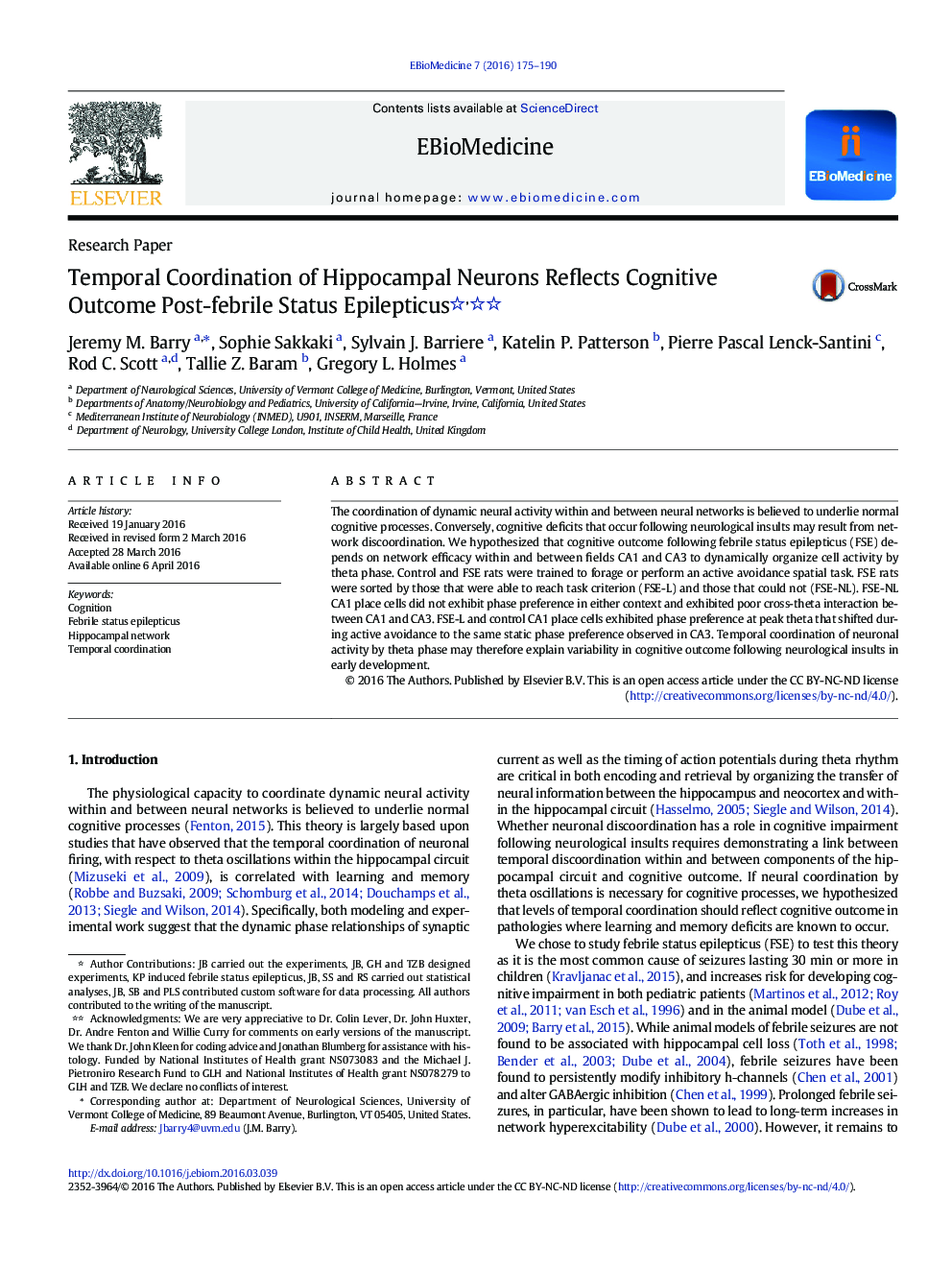| کد مقاله | کد نشریه | سال انتشار | مقاله انگلیسی | نسخه تمام متن |
|---|---|---|---|---|
| 2120841 | 1546892 | 2016 | 16 صفحه PDF | دانلود رایگان |

• We induced prolonged febrile seizures in an animal model of febrile status epilepticus (FSE).
• FSE animals were sorted by those that could learn an active avoidance spatial task and those that could not.
• Cognitive outcome depended on network ability to temporally organize hippocampal place cells with theta oscillations.Rats that experienced febrile status epilepticus (FSE) were trained on an active avoidance spatial task and sorted by those that were able to reach task criterion (FSE-L) and those that could not (FSE-NL). We found that the temporal organization of place cells within and between hippocampal subnetworks by local theta oscillations may be a primary determinant of spatial cognition. Differences in levels of temporal organization were evident in both FSE-L and FSE-NL and therefore point to physiological mechanisms that underpin the variability in cognitive outcomes that follow neurological insults experienced in early development and how negative outcomes may be prevented.
The coordination of dynamic neural activity within and between neural networks is believed to underlie normal cognitive processes. Conversely, cognitive deficits that occur following neurological insults may result from network discoordination. We hypothesized that cognitive outcome following febrile status epilepticus (FSE) depends on network efficacy within and between fields CA1 and CA3 to dynamically organize cell activity by theta phase. Control and FSE rats were trained to forage or perform an active avoidance spatial task. FSE rats were sorted by those that were able to reach task criterion (FSE-L) and those that could not (FSE-NL). FSE-NL CA1 place cells did not exhibit phase preference in either context and exhibited poor cross-theta interaction between CA1 and CA3. FSE-L and control CA1 place cells exhibited phase preference at peak theta that shifted during active avoidance to the same static phase preference observed in CA3. Temporal coordination of neuronal activity by theta phase may therefore explain variability in cognitive outcome following neurological insults in early development.
Journal: EBioMedicine - Volume 7, May 2016, Pages 175–190